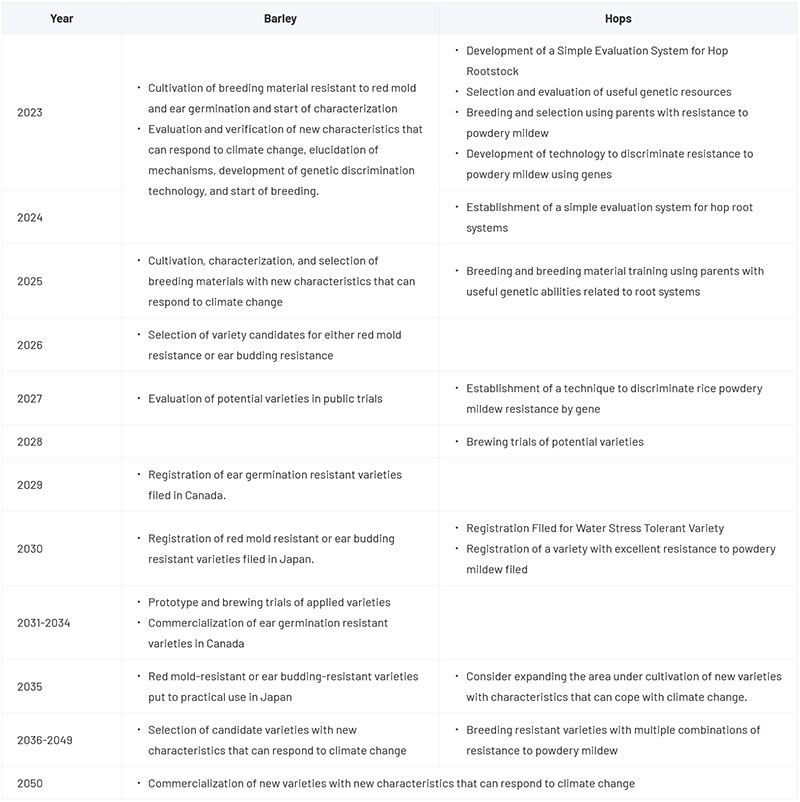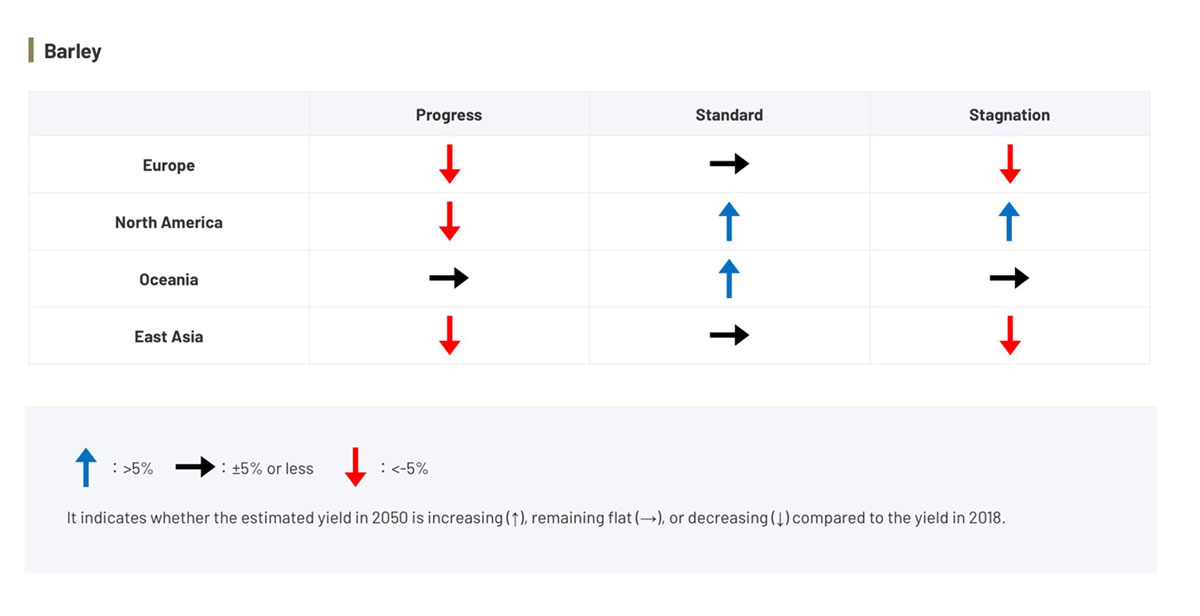Notes
(*1)
① Sustainability progress scenario: temperature rise kept within 2°C.
② Sustainability standard scenario: temperature rise cannot be kept within 2°C.
③ Sustainability stagnation scenario: temperature rise significantly exceeds 2°C.
(*2) A phenomenon in which rainfall causes pre-harvest seeds to germinate in the field while still on the ear.
(*3) The plant from which the seeds are collected.
(*4) The entire underground portion of a plant body.
Response to Climate Change Actions by Developing New Varieties of Raw Materials
Sapporo Holdings Ltd.
| Updated | December 25, 2023 (Posted on December 27, 2023) |
|---|---|
| Publication date | June 8, 2023 |
| Sector | Agriculture, Forestry, Fisheries / Industrial and Economic Activities |
Company Overview

Since its establishment in Sapporo, Hokkaido in 1876 as the Kaitakushi (the national government Hokkaido development commission) Brewery, the Sapporo Group has nurtured and strengthened its distinctive brands in the fields of alcoholic beverages, food and soft drinks, and real estate. In terms of the alcoholic beverages and food and soft drinks business, the company is also expanding its business overseas.
Climate Change Impacts
There is concern about the effects of climate change on barley and hops, the raw materials of beer. Specifically, these include increased disease and insect damage, increased water risk due to heat waves and droughts, and reduced quality and yield of barley and hops due to typhoons, torrential rains, and other wind and flood damage.
Adaptation Initiatives
We conducted an analysis of the agricultural raw materials that are expected to be significantly affected by climate change in the beer business up to 2050, using three scenarios (*1) with different degrees of temperature increase. As a result, it was predicted that barley and hop yields would decrease in the medium to long term, depending on the region (Fig. 1 and Fig. 2).
To address these risks, we are working with various stakeholders, including barley and hop growers, to develop new varieties that can adapt to the risks associated with climate change (e.g., drought and heavy rainfall caused by extreme weather), utilizing the results of raw ingredient research we have conducted since the company was founded (Fig. 3). The goals of our adaptation measures are as follows:
- Apply for registration of new varieties (barley, hops) to adapt to climate change by 2030
- By 2035, commercialize new varieties (barley, hops) to adapt to climate change in Japan
- By 2050, in addition to the above varieties, develop new environmentally adaptable varieties and put them to practical use in Japan and overseas
Plan to 2050 of barley and hop initiatives is shown in the table below (as of December 25, 2023).

Effects / Expected Benefits
Improvement of raw material varieties will help to ensure stable yields and stabilize quality even under the influence of climate change. It is also expected to further lead to the development of new varieties.

(See *1 for "progress," "standard," and "stagnation" in the table.)

(See *1 for "progress," "standard," and "stagnation" in the table.)


